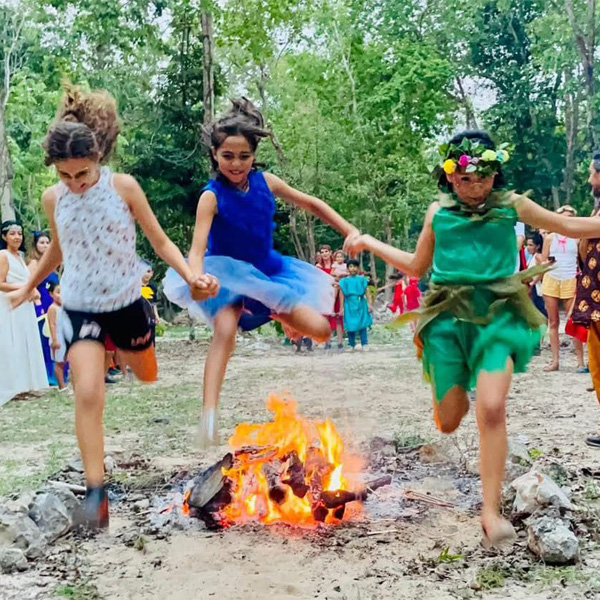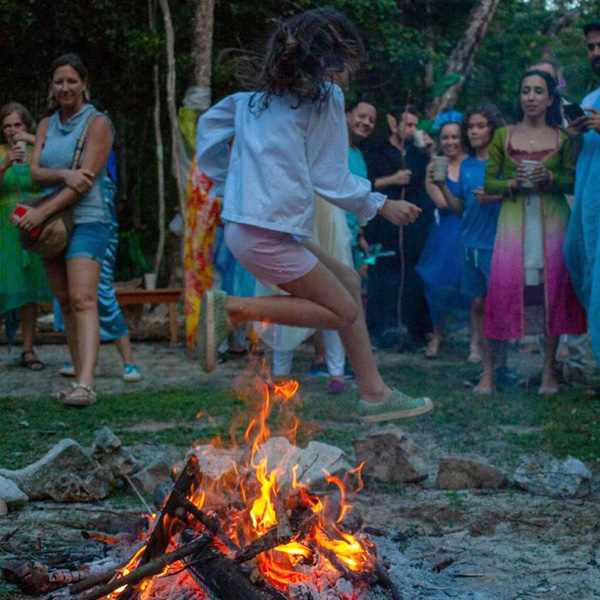Early Childhood Center (2 to 7 years)
Young children live in wonder and see beauty and purpose in everything around them. They are curious about what is coming to meet them. This innate sense of wonder is what allows them to open up to the world. Children learn first by seeing and then by imitating, so we create situations for them where they can experience life. Free play, singing, games, puppets, crafts, painting, cooking, gardening and walking in the jungle are the natural activities for a child of this age. The strong foundations for acquiring knowledge later on are built through imitative play.
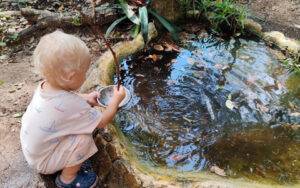
Parent Child
Recognizing the importance of a conscious and respectful accompaniment of our little ones during early childhood, we offer modules lasting one month aimed at parents with children between the ages of 0 months and 12 months.
During these sessions, we create a loving bridge through experiences that encourage exploration, curiosity and free movement, through a short rhythm that cultivates a gradual transition to school life.
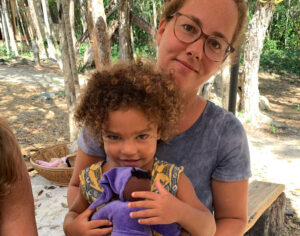
Grades
Upon entering the Grades they show their imaginative life, they are ready to learn. They experience and express life through delicate and complex feelings. When developing, logical thinking begins to open, but it must be cultivated with care since the life of the imagination is what must be strengthened in this seven-year period.
First Grade (7 years)
In primary school, the child discovers the wonders of literature, music, weaving, movements, numbers and letters. The reading process goes from image to symbol and from there to words and writing. Shape drawing teaches spatial awareness and balance. Myths and fairy tales are explored through songs and dances, circle games and music. Here mathematics arises formally: addition, subtraction, multiplication and division, the qualities of numbers and rhythmic counting. Science is discovered through experiences in the natural world. Physical education includes creative movement and games.
Second Grade (8 years)
Este grado es sobre la dualidad, imágenes pictóricas, movimiento rítmico, música, arte, juegos y manualidades. Se cuentan fábulas e historias sobre la naturaleza, junto con leyendas, folclor local e historias de héroes y santos. La lectura y escritura se desarrollan y los cuatro procesos básicos de la aritmética evolucionan hacia la aritmética mental. Las tablas de multiplicar se presentan a través de movimientos rítmicos. Se refina la observación de la naturaleza. Continúa el dibujo de formas, la educación musical y física.
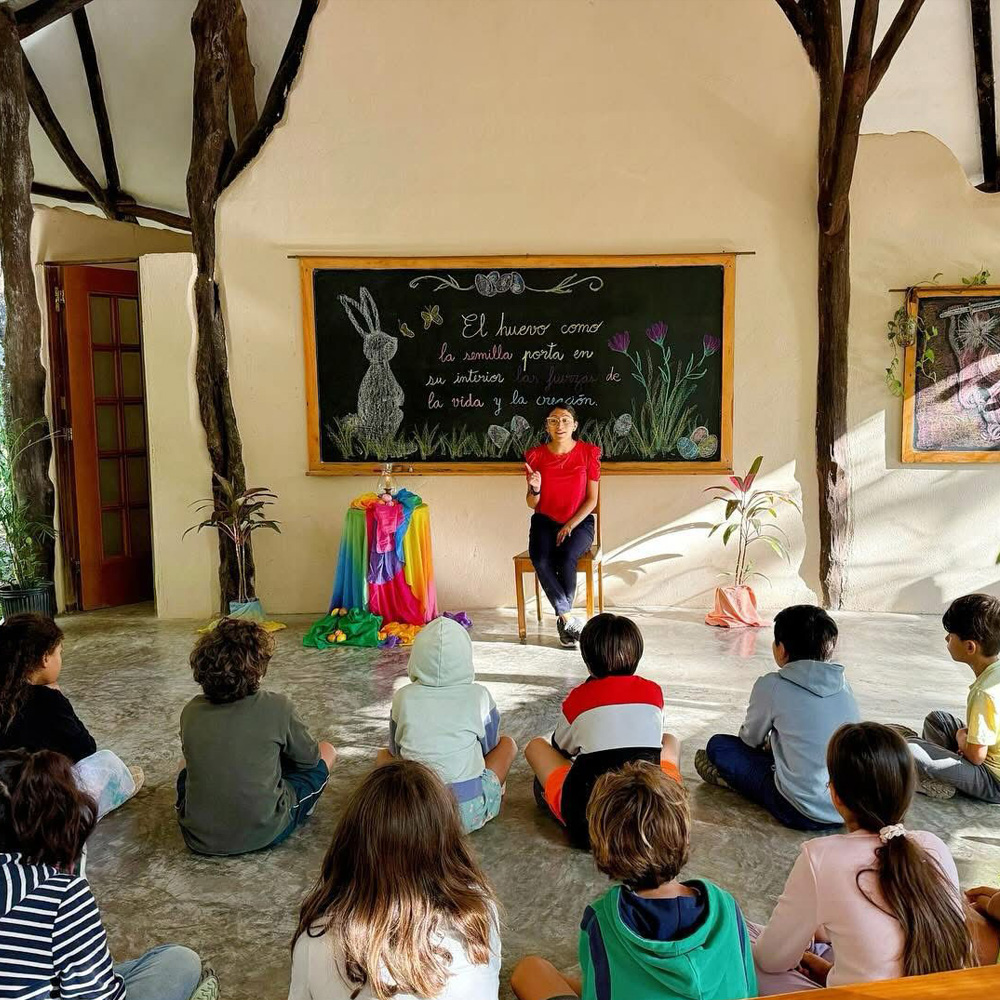

Third Grade (9 years)
They learn stories of Old Testament creation while confronting their human consciousness and growing individuality in the crisis of the 9, through the study of agriculture, construction, and trades. They begin the study of formal grammar and time, weights and measures used as tools to deal with the day to day. The shape drawing continues with reflections and transformations.
Fourth Grade (10 years)
Los estudiantes aprenden acerca de la naturaleza humana y las cualidades que cada animal ha desarrollado por sí mismo. Se estudian las ciencias de una forma creativa y artística y se fomenta la responsabilidad por el reino animal. Se enseñan mitos nórdicos, celtas y mayas y los niños dibujan y bordan los entrelazados símbolos. Este año enfatiza la lectura, redacción y gramática. Las matemáticas se hacen más complejas y se introducen las fracciones. En geografía local, se comienza por su escuela hasta abarcar la península de Yucatán. Las manualidades son más avanzadas, al igual que la música, teatro, pintura, educación física y jardinería.

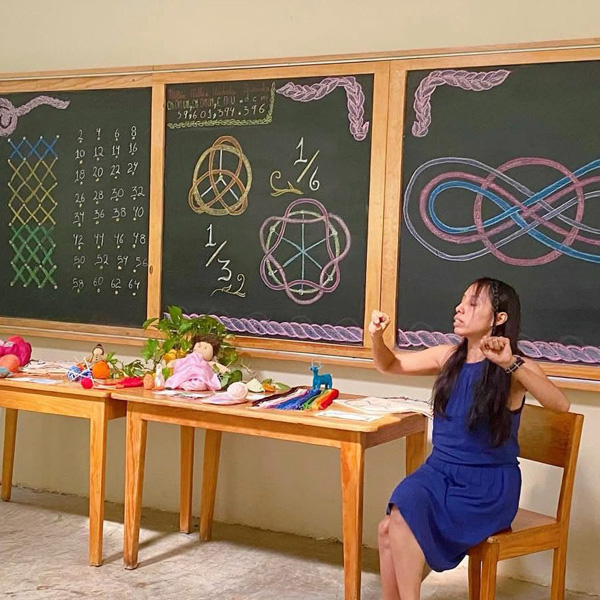
Fifth Grade (11 years)
The themes of metamorphosis in Greek stories introduce us to botany and the incredibly changing forms of nature. Fifth marks the shift from imaginative thinking to the beginning of civic and historical consciousness. They study about the development of man from ancient India and Greece, stories about Buddha, Krishna, Persia, Egypt and Greece through the Iliad and Odyssey. The study of geometry begins and fractions and decimals are applied to everyday situations. In Geography, the Americas are studied. Writing and spelling continue, as well as music, modeling, painting, drawing, gardening and physical education.
Sixth Grade (12 years)
La física se desarrolla a través de la óptica, acústica y el estudio del calor. El reino mineral se estudia en la clase principal de geografía, además de un examen de un continente y sus culturas. Se introduce la astronomía a través de la observación y se cumplen los principios básicos de la geometría. Los estudios de Historia se basan en el imperio romano: biografías e historias de sus héroes: los caminos, el orden, organización y leyes, así como el dominio del mundo físico, la esclavitud y la avaricia. Se estudia la edad media y el nacimiento del Cristianismo y del Islam. El trabajo continúa en las áreas de canto e instrumentos musicales; incluyéndose en este grado conjuntos, coros y trabajo orquestal. Dibujan en claroscuro.

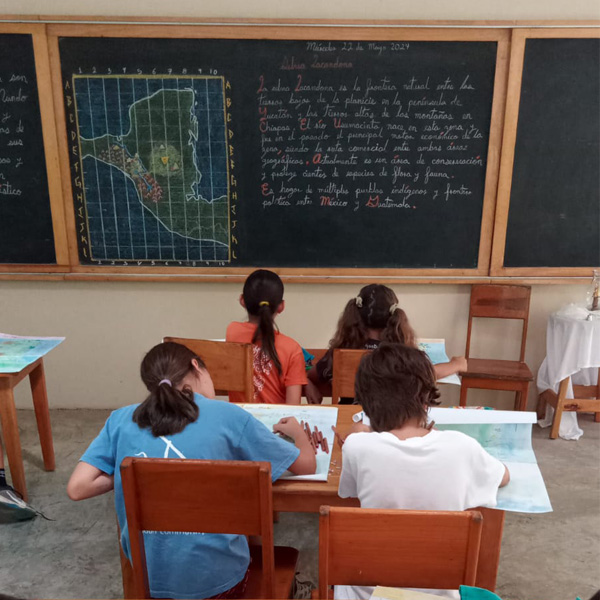
Seventh Grade (13 years old)
Girls and boys reach a critical period in their development, it is a time to generate a new relationship with the world.
Para entender el mundo que los rodea se presenta la química como una nueva forma de experimentar la materia desde su estructura más básica. Aunado a la materia viene la energía y con ella el estudio de la física.
Así mismo el lenguaje se cultiva mediante las interjecciones, en donde los alumnos pueden explorar la expresión de sentimientos y sensaciones evocándolos directamente a través del lenguaje. En este último caso se exploran las maneras individuales de expresión y por lo tanto los ejercicios de estilo son de gran ayuda para los estudiantes.
Eighth Grade (14 years old)
En esta edad se completa una imagen general del mundo y del lugar que la humanidad ocupa en el mismo.
With students going through just the middle of adolescence, they tend to be more robust, both physically and in the judgments that emanate from them.
The critical capacities of young people are notably superior, including the adults around them, and accompanying all this appears a reasoning and reasonable side in the students.
Students find new and unknown perspectives with a sharpened mind, a vibrant and tender heart, and limbs that seek to overcome the weight of gravity.
Cultural events in geography transport students out of their egoism and place them in a point of reflection based on their own values.
Industrial revolutions and the human being as creator of the current social order are studied. And the biographies mark starting points for students to find the ideals that will lead them in the future to be citizens of the world.


Festivals
The Rose Ceremony
The first week of school is a rite of passage for first graders; here begins your journey through formal education. All grades meet together with parents and teachers, and the early childhood is also invited. Each first grader is greeted with a rose by a student in higher grades.
Autumn Equinox
This Mayan festival celebrates the birth of the new sun, represented by the germinating corn kernel.
Michaelmas
We now focus our willpower and face our fears by penetrating the shortest days of the year. The light overcomes the darkness in the form of Michael defeating the dragon.
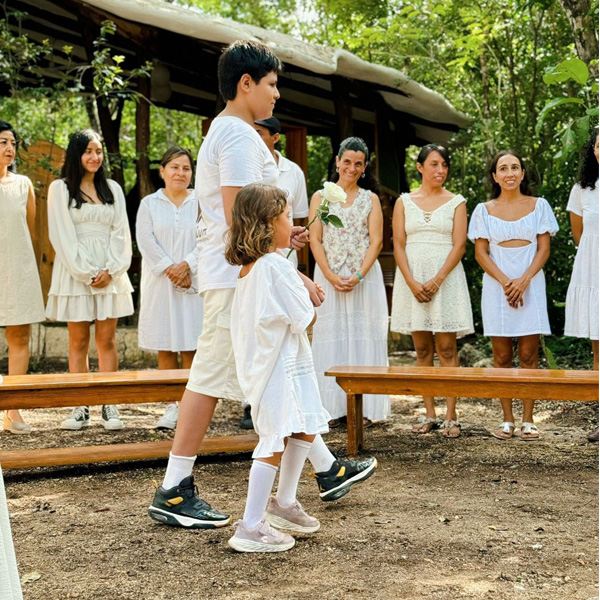
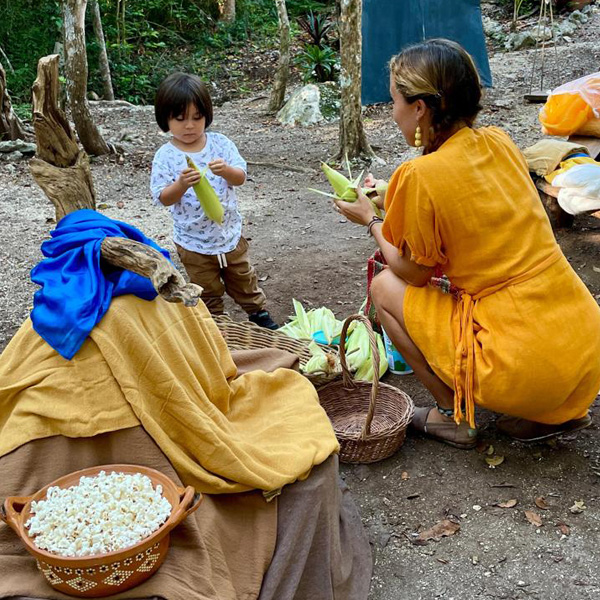
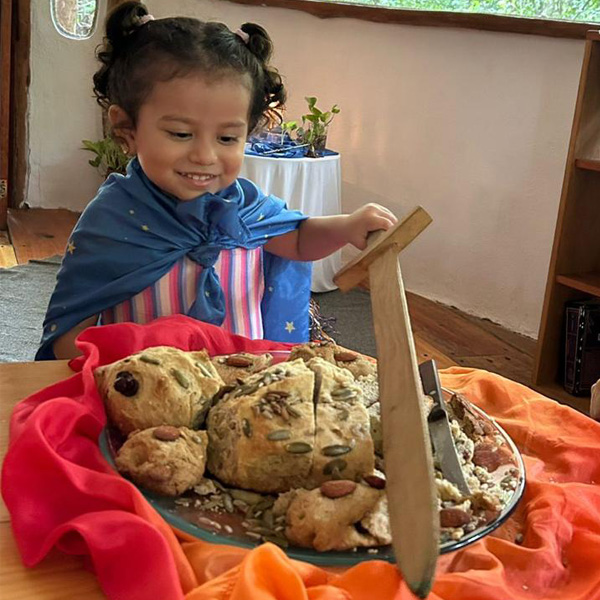
Day of the Dead
This traditional Mexican celebration highlights the connection between the life of the present and the afterlife. It gives us a space to remember our loved ones who are no longer with us.
San Martín
On this night of November 11, we take a walk in the dark carrying our lanterns. We listen to the story of the generous Martin and sing as we light the way with our lanterns.
Advent Festival
We celebrate the arrival of the spirit of peace and happiness into our hearts. The spiral of lights is the image of the journey we make in the search for our inner light and how we emerge in the illuminated world.
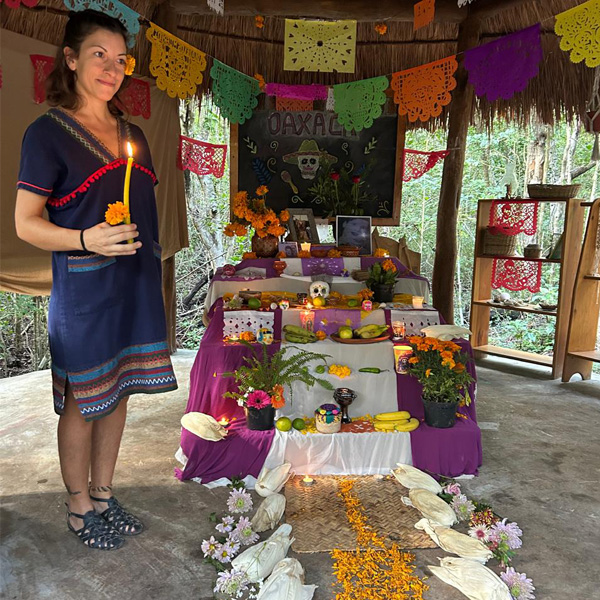
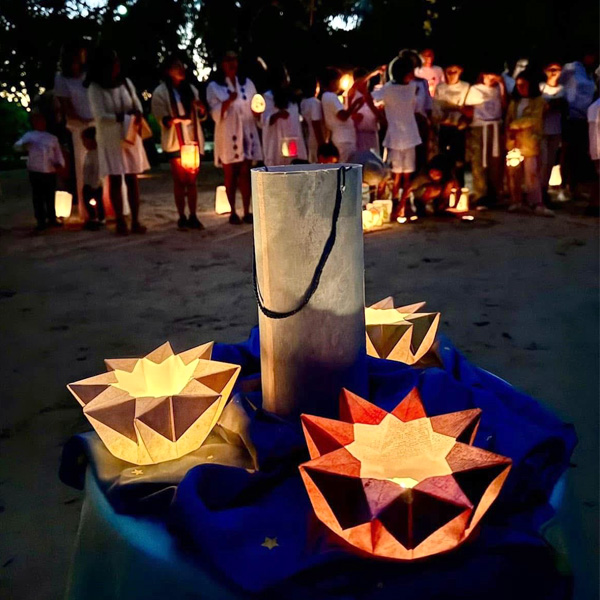

Candlemas
A celebration that we share in community, where we offer gratitude to the stillness that winter brought us and bless the seeds that will bring a radiant and prosperous spring.
Spring Equinox
A Mayan festival where we celebrate the connection of the universe to earthly life.
Palo de Mayo
En este día celebramos a la familia, a la vida y al verano que llega. Los niños bailan alrededor del Palo de Mayo, juntos participamos en juegos tradicionales y compartimos rica comida.



Saint John
An ancient festival where we seek to strengthen and purify the force of the sun and join the strong impulse of nature. We celebrate the end of the school year with the traditional bonfire of Saint John.
